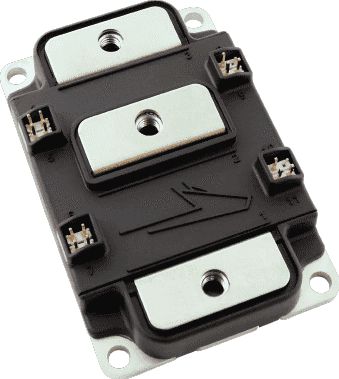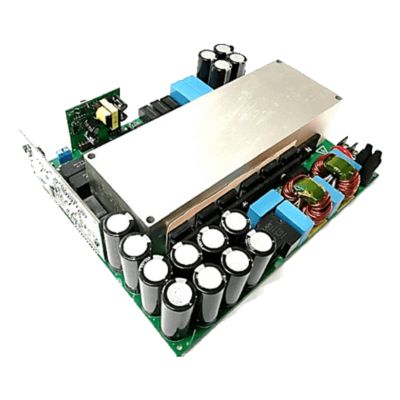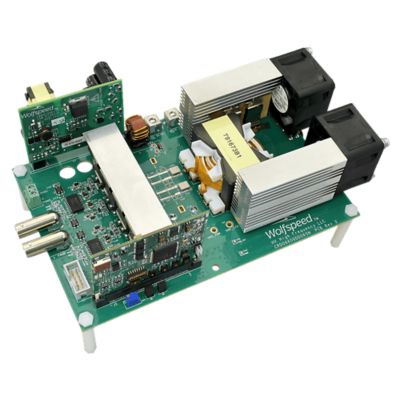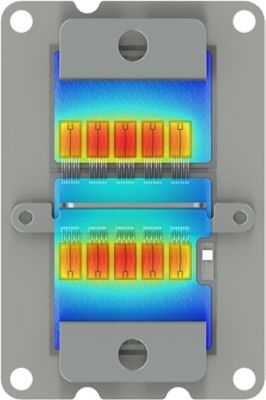-
United States -
United Kingdom -
India -
France -
Deutschland -
Italia -
日本 -
대한민국 -
中国 -
台灣
-
Ansys는 학생들에게 시뮬레이션 엔지니어링 소프트웨어를 무료로 제공함으로써 오늘날의 학생들의 성장을 지속적으로 지원하고 있습니다.
-
Ansys는 학생들에게 시뮬레이션 엔지니어링 소프트웨어를 무료로 제공함으로써 오늘날의 학생들의 성장을 지속적으로 지원하고 있습니다.
-
Ansys는 학생들에게 시뮬레이션 엔지니어링 소프트웨어를 무료로 제공함으로써 오늘날의 학생들의 성장을 지속적으로 지원하고 있습니다.
ANSYS BLOG
September 12, 2023
Ansys optiSLang Charges Up Innovation at Wolfspeed
When U.S. President Joe Biden embarked on an “Invest in America” tour earlier this year, aimed at highlighting American manufacturing innovation and leadership, his first stop was at Wolfspeed, headquartered in Durham, North Carolina. This Ansys customer is transforming the semiconductor industry by leading a shift from silicon to silicon carbide (SiC) for many high-power applications. Wolfspeed currently produces over 60% of the world’s SiC materials, and the company is engaged in a $6.5-billion capacity expansion effort to dramatically increase production.
“A lot of people aren’t familiar with SiC, but it’s an ideal semiconductor material for high-power electronics. As an alternative to traditional silicon, it offers a lot of performance advantages in applications with high output demands,” says Dr. Blake Nelson, systems team lead engineer at Wolfspeed.
“While semiconductor companies are fitting millions of transistors into a square millimeter for digital computing applications, at Wolfspeed we’re building single transistors that are a square millimeter in size. They provide much higher power for applications like automotive powertrains and onboard charging systems.”
According to Nelson, SiC has ideal material properties for these kinds of demanding applications, including a higher band gap voltage, lower relative resistance, and thermal characteristics that allow for better heat dissipation when compared to silicon. Wolfspeed’s SiC-based transistors can operate reliably at much higher temperatures than silicon and switch much faster, enabling them to support the 900 V and 1200 V applications associated with electric vehicle (EV) applications.

This silicon carbide (SiC) XM3 half-bridge power module from Wolfspeed supports 1,200-volt applications in electric vehicles, which is beyond the capabilities of traditional silicon packages.
“Wolfspeed’s products can run circles around traditional silicon solutions in high-power, high-temperature applications,” says Nelson. “We’re redefining what transistors are capable of.”
Biden’s visit to Durham in March confirmed what many industry experts already know: Wolfspeed is a global force in the movement to transform automobiles from internal combustion engines to electric powertrains. Additionally, the Motor Trend Car of the Year for 2022, the all-electric Lucid Air, features a traction inverter designed by Wolfspeed. It combines an official EPA estimated 516 miles of range with impressive 1,050 horsepower.
Onboard Chargers: An Overlooked but Critical Component
Charging systems for EVs are a key focus for Nelson and his team in the Power Modules business unit at Wolfspeed.
“No one gives much thought to the charging system,” he says. “But if electric vehicles are going to become commonplace, we need to make it much easier to charge them at multiple locations, including at home.”
The solution is to include an onboard charging system on every vehicle that can be easily plugged into any outlet, taking AC current from the car owner’s home and converting it to DC power to recharge the battery. Onboard battery chargers are not only the key to keeping EVs powered, but they are also often capable of harvesting kinetic energy from the vehicle itself to provide additional charge when braking.

Engineers in Wolfspeed’s Power Modules business unit are applying Ansys solutions in innovative ways to design onboard charging systems that are smaller in size and lighter in weight, yet still able to produce high output.

Ansys simulations support a range of product development efforts at Wolfspeed. This 6.6-kW high-frequency DC-DC converter is responsible for taking the DC power from the battery and converting and regulating the voltage to meet the needs of diverse automotive systems such as headlights.
Nelson points out that this system must be optimized for size and weight, to maximize both the vehicle’s range and energy efficiency. However, traditional silicon has made these systems very limited in terms of their output, size, and speed. Enter SiC.
“SiC can improve onboard chargers by making them much smaller and lighter while still supporting high performance,” says Nelson. “Because it can switch faster, the charger design can rely on higher switching frequencies. That allows the inclusion of smaller passive components, like smaller capacitors and smaller transformers. One of our goals in the Power Modules unit is to minimize the weight and the size of this block, which is, to some extent, just wasting space in the car.”
Nelson’s team is focused on developing innovative package designs that support onboard chargers, as well as other EV components like traction inverters, which support rapid acceleration.
“Our job is to take a little chip of SiC and interface it with the outside world in a way that meets all the needs of our customers,” he says. “It needs to be able to isolate the parts to carry all that current and dissipate all the heat that’s generated from the losses that occur in the chips. It needs to withstand chemical spills, as well as environmental factors like moisture and humidity. And it needs to be designed for mechanical forces like shock and vibration.”
Wolfspeed must also consider connectivity in designing its SiC packages.
“The chips need to be connected electrically, both from a signal control path and also from a power path, to get all that current through,” says Nelson. “There needs to be thermal interfacing to the outside world to remove the heat from the chips. All this adds up to a lot of design complexity, a lot of engineering complexity.”

Thermal simulation result for a Wolfspeed Half-Bridge power module
Innovative Products Demand an Innovative Approach
Nelson and his team in Wolfspeed’s Power Modules unit are applying a suite of Ansys solutions, brought together via Ansys optiSLang, to design and verify their package designs for onboard chargers, DC converters, traction inverters, and other components that are essential to widespread EV commercialization.
The team is leveraging a novel optiSLang workflow that integrates electrical simulation in Ansys Electronics Desktop with thermal simulations in Ansys Icepak to create a closed-loop process that predicts the final temperatures in SiC chips installed in a real-world EV operating environment. According to Nelson, this process integration and design optimization solution is ideally suited to the kinds of complex multiphysics studies his team is charged with.
“Electrical properties in chips are highly dependent on junction temperatures, so you can’t look at either aspect of performance in isolation,” Nelson says. “Thermal results need to be mapped directly to the electrical simulation, and the refined power loss estimate needs to be iterated back into the thermal analysis. Ansys optiSLang allows us to converge those simulations and create a true closed loop.”
Ansys Mechanical supports stress and strain analyses, while the addition of Icepak enables a look at stresses caused by thermal expansion. “We even do some base plate curvature optimization to really get the best mechanical and thermal connection possible out of our base plates,” says Nelson.
“Similarly, we do a lot of electrical magnetic analysis of our packages. So, that’s predicting both the inductive and resistive parasitics. We look at the magnetic coupling, especially between the power and signal path. We look at the isolation of the package. And, finally, we optimize thermal properties, especially during events like acceleration, to remove energy and heat out of the device to support high performance.
“We found the tools on the market today to support that kind of closed-loop analysis to be lacking until we discovered Ansys optiSLang could fill in that gap. It allows us to create a kind of digital twin of our packages and look at true system-level performance — how current output is going to affect heat production, and vice versa.”
With the EV market expected to expand to nearly 27 million units by the year 2030, major players in this industry are expected to invest over $350 billion in the near future. Wolfspeed is positioned to play a leadership role with its innovative power device solutions, enabled by Ansys multiphysics simulations.
“Ansys is really driving our package innovations by supporting more advanced and complex power module optimization,” Nelson says. “From the die geometry to the package geometry, Ansys allows us to create our own optimization routines, mappings, and huge optimization sets. We’re really excited about all the future possibilities of the closed-loop design process enabled by Ansys optiSLang — and the level of product innovation it’s going to drive at Wolfspeed.”
Learn more about how Ansys optiSLang can help you.










